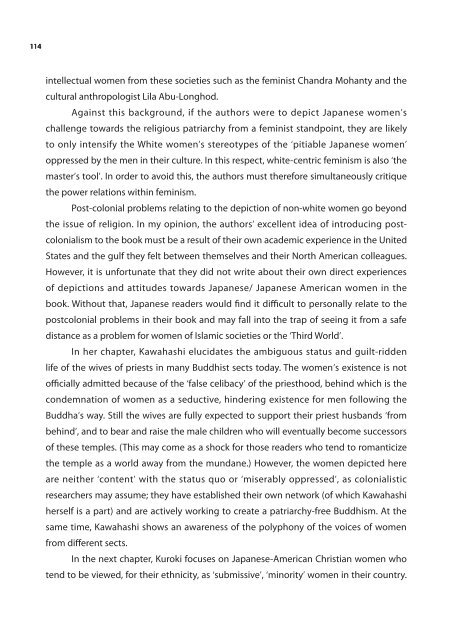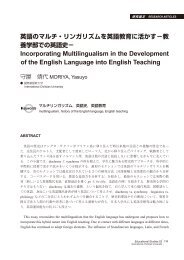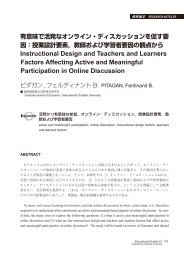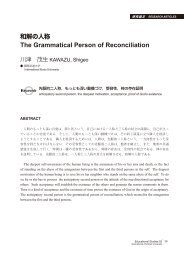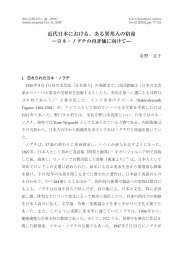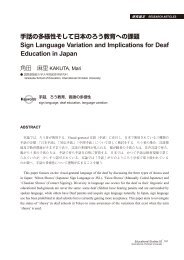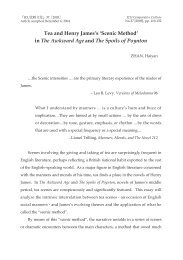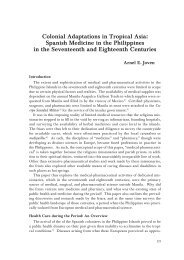Untitled - subsite - å½éåºç£æ大å¦
Untitled - subsite - å½éåºç£æ大å¦
Untitled - subsite - å½éåºç£æ大å¦
You also want an ePaper? Increase the reach of your titles
YUMPU automatically turns print PDFs into web optimized ePapers that Google loves.
114<br />
intellectual women from these societies such as the feminist Chandra Mohanty and the<br />
cultural anthropologist Lila Abu-Longhod.<br />
Against this background, if the authors were to depict Japanese womens<br />
challenge towards the religious patriarchy from a feminist standpoint, they are likely<br />
to only intensify the White womens stereotypes of the pitiable Japanese women<br />
oppressed by the men in their culture. In this respect, white-centric feminism is also the<br />
masters tool. In order to avoid this, the authors must therefore simultaneously critique<br />
the power relations within feminism.<br />
Post-colonial problems relating to the depiction of non-white women go beyond<br />
the issue of religion. In my opinion, the authors excellent idea of introducing postcolonialism<br />
to the book must be a result of their own academic experience in the United<br />
States and the gulf they felt between themselves and their North American colleagues.<br />
However, it is unfortunate that they did not write about their own direct experiences<br />
of depictions and attitudes towards Japanese/ Japanese American women in the<br />
book. Without that, Japanese readers would find it difficult to personally relate to the<br />
postcolonial problems in their book and may fall into the trap of seeing it from a safe<br />
distance as a problem for women of Islamic societies or the Third World.<br />
In her chapter, Kawahashi elucidates the ambiguous status and guilt-ridden<br />
life of the wives of priests in many Buddhist sects today. The womens existence is not<br />
officially admitted because of the false celibacy of the priesthood, behind which is the<br />
condemnation of women as a seductive, hindering existence for men following the<br />
Buddhas way. Still the wives are fully expected to support their priest husbands from<br />
behind, and to bear and raise the male children who will eventually become successors<br />
of these temples. (This may come as a shock for those readers who tend to romanticize<br />
the temple as a world away from the mundane.) However, the women depicted here<br />
are neither content with the status quo or miserably oppressed, as colonialistic<br />
researchers may assume; they have established their own network (of which Kawahashi<br />
herself is a part) and are actively working to create a patriarchy-free Buddhism. At the<br />
same time, Kawahashi shows an awareness of the polyphony of the voices of women<br />
from different sects.<br />
In the next chapter, Kuroki focuses on Japanese-American Christian women who<br />
tend to be viewed, for their ethnicity, as submissive, minority women in their country.


